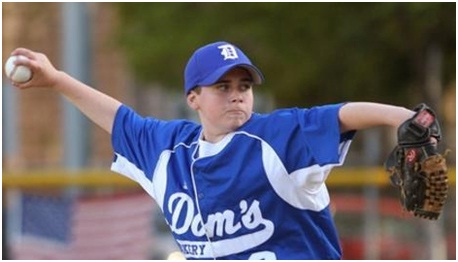Predictors of the Tommy John Surgery / Ulnar Collateral Ligament Reconstruction in Major League Baseball Pitchers
Can we predict who will need Tommy John Surgery?
This is a hot topic right now in field of orthopedic surgery. We have seen great rise in the incidents of ulnar collateral ligament injuries resulting in baseball players needing Tommy John surgery.
There was an excellent article written by Dr. David Whiteside, et al, in the September, 2016 American Journal of Sports Medicine that specifically looked at risk factors that can predict major league baseball pitchers that would need a Tommy John surgery.
 Researchers highlighted background data noting that there is concern right now and actually discussion that the ulnar collateral ligament injury is almost an epidemic affecting pitchers at all levels of baseball from recreational high school players to the pro pitchers. The ulnar collateral ligament reconstruction surgery has been reported to impose an average of 17 to 21 months away from the MLB competition and possibly diminish their performance. If there is a way to curtail the current trend and protect the integrity of the elbow joint in pitchers, that would be the best form of treatment would be prevention.
Researchers highlighted background data noting that there is concern right now and actually discussion that the ulnar collateral ligament injury is almost an epidemic affecting pitchers at all levels of baseball from recreational high school players to the pro pitchers. The ulnar collateral ligament reconstruction surgery has been reported to impose an average of 17 to 21 months away from the MLB competition and possibly diminish their performance. If there is a way to curtail the current trend and protect the integrity of the elbow joint in pitchers, that would be the best form of treatment would be prevention.
There has been some effort made to help reduce the risk of ulnar collateral ligament injury such as limiting the amount of pitches per game. Currently in the MLB, there is a maximum of 100 pitches per game.
Major Risk Factors For Tommy John Surgery / Ulnar Collateral Ligament Repair
The particular study detailed above identified the risk factors for professional baseball pitchers sustaining an ulnar collateral ligament injury resulting in a Tommy John procedure. The researchers found six risk factors that led to increased incidents of Tommy John surgery.
- Fewer days between games.
- Fewer pitch types employed.
- More pitches per game.
- Greater pitch speed.
- A less pronounced horizontal release location.
- A smaller stature of the player.
The authors noted that the current findings supported the theory that recovery periods after MLB pitching are critical for reducing injury, a point previously specified at the youth level. This also endorsed the rationale for multi-pitcher rotations in MLB. They also found that if an extra day between games reduces the UCL injury, the value of a six man pitching rotation as opposed to the conventional five, and/or larger bullpens is obvious.
Another interesting and statistically significant finding that the researchers reported was that a pitcher’s odds of undergoing a Tommy John procedure decreased by 33% for each unique pitch type that he possessed in his repertoire. This means that pitchers that throw different types of balls/pitches would have a lower incidence of injury to their ulnar collateral ligament. They did note that one of risk factors was speed which obviously is not going to be changed among the pitchers, that would be considered a non-modifiable risk factor.
Statistically, they found that if the pitcher threw an average of 16 fewer pitches per game, it would reduce the surgical odds that an extra rest day between games would have provided.
In conclusion, they found that there are very specific risk factors for pitchers in the MLB undergoing a Tommy John procedure. The risk factor that could be modified most easily would be a larger pitching rotation among the clubs where the pitchers are throwing less pitches instead of a five men rotation to a six men rotation. They also found that if the pitchers could add a variety of different types of pitches to the repertoire, that will also reduce their incidence of a Tommy John procedure. Non-modifiable risk factors would obviously be the stature/height of the patient and the speed that the pitch was being thrown.

Recent Comments